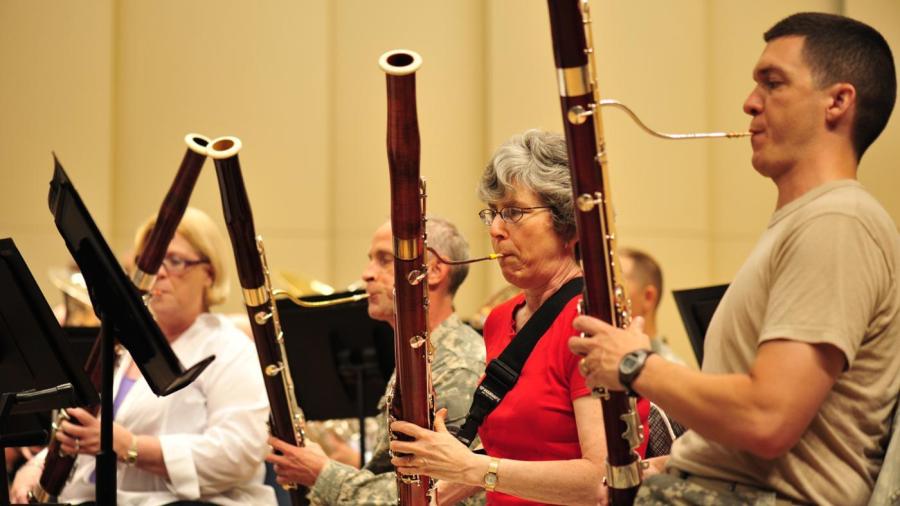What Are Some Examples of Double-Reed Instruments?

In the modern Western musical tradition, there are two main families of double-reed woodwind instruments: oboes and bassoons. Both of these families consist of a number of different instruments, such as the contraforte, contrabassoon, piccolo oboe, the cor anglais or English horn and the bass oboe.
The different instruments in the oboe and bassoon families range in size and pitch, with the smallest instruments, such as the piccolo oboe, producing the highest notes, and the larger instruments, such as the contrabassoon and bass oboe, producing the lower pitches. While the oboe and bassoon families are by far the most widely used double-reed woodwinds, these groups do also include several other instruments such as the heckelphone and sarrusophone, the latter of which is essentially a double-reed version of the saxophone. These two instruments are no longer produced and are only very rarely used in modern symphonies and orchestras.
Double-reed instruments differ from the other woodwind instruments in that sound is produced by two pieces of cane reed vibrating against one another, instead of a single reed vibrating against the instrument’s mouthpiece. The sound produced by the double reed is unique and is easily distinguishable from that of single-reed woodwinds.





